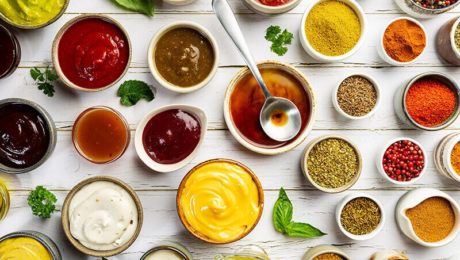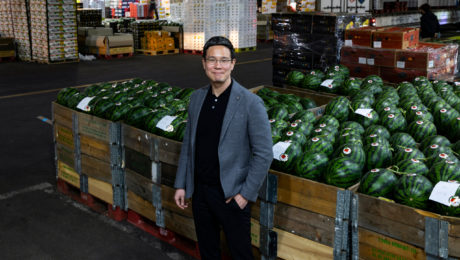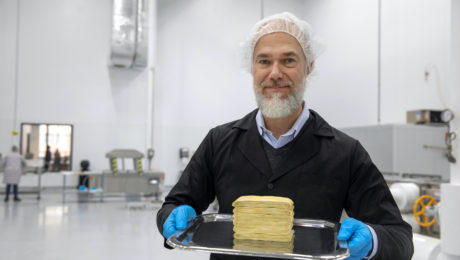What Is or Isn’t a Health Claim?
What exactly constitutes a health claim on a food label? It’s a contentious topic that can be a source of problems and expenses for the unwitting producer.
“We want to communicate accurately and effectively to consumers in a way that’s truthful and not misleading. There needs to be a body of evidence that supports health claims,” said Josephine Wee, PhD, an assistant professor of food science at Penn State (and member of TFA’s Science Advisors). “The bottom line: health claims are complicated.”
Wee unpacked what is and isn’t a health claim during the FERMENTATION 2021 conference. Similar topics into the regulation of fermented foods will be addressed at TFA’s August conference, FERMENTATION 2022.
Wee questioned: does the fermentation community require health claims on certain fermented foods? Today, terms like gut health, probiotics and improved immunity dominate the language of fermented foods. But words and definitions matter, Wee stressed.
Defining Health Claims
When putting health claims on a food label, website or marketing material, information must be truthful and transparent. Remember:
– The FDA has approved only 12 health claims. In the U.S., food labels can legally only include health claims that meet FDA requirements. There must be “significant scientific agreement among qualified experts that these claims are factual and truthful,” Wee said. FDA approval is based on the amount of publicly available, scientific evidence from reputable studies.
– A health claim is not a nutrient claim. Food producers cannot link the effect of a nutrient or food to a disease or health condition (other than in the rare case that there is supporting scientific evidence). Nutrient claims are defined by the FDA to “describe the level of a nutrient in the product, using terms such as free, high, and low, or they compare the level of a nutrient in a food to that of another food, using terms such as more, reduced, and lite.”
– A health benefit cannot be used interchangeably with a health claim. A health claim must pass a two-part test: first, contain the characterization of the type of food/food component and, second, state its relationship to a disease. For example: “A good source of calcium and vitamin D. Reduces risk of osteoporosis.”
“The reason for these standards is that it provides a high level of confidence to validate the substance and disease relationship,” Wee said.
What is Not a Health Claim?
Wee said producers must be careful not to mislead consumers with an inaccurate health claim.
She shared the International Scientific Association for Probiotics and Prebiotics (ISAPP) consensus statement on fermented foods. In it, the authors write: “Although consumers have become increasingly interested in fermented foods, it is unfortunate that, in our opinion, much information available on fermented foods in popular press magazines, websites and social media is exaggerated or inaccurate.”
Here are four health-related claims that are not health claims.
1. Description of well-being from consumption of a food. These claims do not mention a disease or disease-related condition. For example, “Multivitamins contribute to general good health.”
2. Structure-function claims. A structure-function claim describes the role of an ingredient in affecting or maintaining normal structure or function in humans. “There is this presence of this food and food ingredient, but it doesn’t really talk about disease,” Wee explained. For example, “Calcium builds strong bones.”
3. Dietary guidance. A dietary label addresses the role of good health in general dietary patterns. For example, “Five servings of fruits and vegetables a day are recommended for good health.”
4. Nutrient content claim. These characterize the level of nutrients in food. For example, “Good source of fiber.”
“These four health-related claims are sometimes mistaken for health claims,” Wee said, “but they’re actually not health claims by the definition of regulatory agencies such as the FDA.”
Where Can Producers Get Into Trouble?
Securing FDA approval for a new health claim can be arduous. Under the Nutrition Labeling Education Act of 1990 (NLEA), a company can petition the FDA to consider a new health claim. But the process is typically lengthy (240-540 days) and costly.
Often, it is a competitor that challenges a producer’s health claim.In 2010, Dannon was ordered to pay $45 million in a class-action lawsuit brought against them by Activia yogurt. Dannon’s ads claimed their yogurt was clinically and scientifically proven to regulate digestion and boost immune systems, but were deemed to be false advertising.
In the past few years, kombucha brands have been particularly vigilant in monitoring health claims in their industry. Tortilla Factory (parent of Kombucha Dog) sued Trader Joe’s, Better Booch, Makana Beverages and Rowdy Mermaid Kombucha for supposedly violating the law by exceeding the 0.5% abv threshold.
“I think as fermented foods become more mainstream…over time consumers will become more educated and understand what these labels mean,” Wee noted.
- Published in Business
“Next Level Fermentation”
“Fermented and Flourishing” is what Whole Foods Market calls the growing world of fermented condiments. The retailer’s Trends Council released their first-ever summer condiments trends predictions.
“These days, fermented foods are an unstoppable force charging through aisle after aisle with a full head of steam. Condiments are no exception,” reads the press release. “We’re seeing tangy fermented ingredients adding flair to vinaigrettes, hot sauces, honeys and mayos. With flavor boosts like miso, kimchi and fermented garlic, these products exponentially expand the flavor possibilities of every summer soirée.”
Sales for the condiment, marinade and dressing categories are expected to hit $2.9 billion by 2024, according to market research firm Mintel.
Whole Foods’ list highlighted emerging and established fermented condiments: Lucky Foods Seoul Kimchi Mayo, Cleveland Kitchen’s line of fermented dressings and marinades, California Olive Ranch Carrot Miso Vinaigrette, Firefly Kitchens Kimchi Hot Sauce and Ninja Squirrel Coconut Sriracha Hot Sauce.
Read more (Whole Foods Market)
- Published in Business, Food & Flavor
Sriracha Shortage
A failed spring chile harvest has left sriracha brands in the lurch. Sriracha – a fermented condiment made with peppers, vinegars, salt, sugar and garlic – can’t be made without the iconic red jalapeño chiles.
Huy Fong Foods, based in Irwindale, Calif., produces one of the most popular sriracha brands. They typically use 100 million pounds of chiles a year to make sriracha, chili garlic sauce and sambal oelek. But drought in Mexico has caused an “unprecedented shortage” and left store shelves consistently empty of the famous sriracha brand.
The chile shortage is hurting other companies, too. Though Mother-in-Law’s Kimchi uses the chiles in their products, they haven’t felt the crunch so far. “It hasn’t trickled down to a smaller supplier like me yet, but I think it just means that it’s coming,” said Lauryn Chun, founder.
Read more (The New York Times)
- Published in Business
Championing Indigenous Brewers
The headline says it all: “The Country’s First Native American Woman-Owned Brewery in the U.S. Doesn’t Want to Be Its Last.”
Co-founders Shyla Sheppard (who has heritage from the Three Affiliated Tribes – Mandan, Hidatsa and Arikara – of North Dakota) and her business partner and wife, Dr. Missy Begay (Diné heritage) founded Bow & Arrow Brewing Co. in 2016. The brewery has become known for wild and sour beers made with cultivated yeast. They forage for neomexicanus hops, a species found in New Mexico. Local and indigenious ingredients – like blue corn, sumac, prickly pear and juniper – are used in a new line of hard seltzers.
Bow & Arrow began a unique initiative on October 11, 2021, Indigenous Peoples’ Day. The brewery launched Native Land. They provided an IPA recipe to breweries across the U.S. to create a beer for a common mission: “to acknowledge the contributions and history of Native American people in the United States.” Participating breweries were given a can design template, which included space to acknowledge the tribal land where the brewery is located.
The campaign was so popular – 53 breweries in 24 states and one Canadian province brewed Native Land beer – that they extended the deadline for the project to September 2022. The beers are “vehicles for activism,” with a portion of proceeds going to a Native American-operated nonprofit of the brewer’s choice.
“We’re reclaiming our history and narrative. I think the contributions that Native people have had to agriculture have been erased or dismissed. It’s important to share that story to non-Native people, but also to other Native folks,” she says. “I think fostering that appreciation and connection to our history brings about healthier Native communities.”
Bow & Arrow is one of only a small number of Native-owned breweries in the U.S. – but Sheppard and Begay hope that will change and, one day, there will be more. Sheppard adds: “Having done what we’ve done — in what I hope is a respectful way of incorporating our culture and background — I think it’s inspiring other brewers.”
Read more (Eater)
- Published in Business, Food & Flavor
Beauty Embraces Bacteria
Beauty brands continue to capitalize on a trend: putting prebiotics, probiotics and postbiotics into skin-care products. This “wave of new products” that tout -biotics is filling the cosmetic aisle, according to The New York Times.
“It’s like ‘Star Wars’ happening on the surface of skin,” says Dahlia Devkota, founder of the Los Angeles-based skin-care brand Editrix. “‘Good’ and ‘bad’ bacteria both excrete postbiotics, which are their weapons of war. The goal is a balance of both with no one species taking over.”
Devkota adds that she finds skin care products with -biotics are gentler on the skin. Many traditional skin-care brands strip the skin of natural oils, “weaken(ing) the skin barrier.”
Some brands are experimenting with using fermented ingredients in their skin care products. Venn, another Los Angeles-based skin-care brand, has a scientific advisory board that has spent decades studying the microbiome. Venn’s Synbiotic Defense Mist face spray uses water with probiotic ferments.
“Because fermentation makes the molecules smaller, the product can penetrate the skin surface more deeply,” says Jeff Rosevear, the head of skin-care research and development for new brands at Unilever. The company’s new line, Ferver, has a serum made with fermented collagen.
Read more (The New York Times)
Fermented Foods Face Patchwork of Global Regulation & Standards
Should there be global standards for fermented foods? A new study argues “to preserve consumer confidence in fermented foods,” uniform regulations are needed.
Current guidelines “are not mature enough to adequately regulate the significant diversity of fermented foods that are increasingly available in the market,” reads the study, published in the peer-reviewed journal Frontiers in Nutrition. While fermented foods are experiencing a major resurgence in popularity, standards and regulations differ by country and – in some instances – region and state. Fermentation regulations are few and, in the case of some foods, nonexistent.
Scientists at Teagasc, Ireland (the agriculture and food authority in Ireland) studied regulations in North America, South America, Asia, Africa, Europe and Australia/New Zealand. Their research – supported by the Institute for the Advancement of Food and Nutrition Sciences (IAFNS) – is thorough. They found legislative efforts to regulate or standardize fermented foods “have been largely reactive, rather than being proactive, in nature.”
A harmonized blueprint, the study continues, would include specifics for each fermented food, not just the category. Uniform standards would include:
- Microbial and chemical composition
- Safety protocols
- Standards on storage, transportation and distribution
- Communication guidelines
- Regulatory clarity
- Government expert committee oversight
“Ultimately, addressing the challenges outlined here, would contribute to the ease of doing business, encourage consumer and investor confidence, leading to growth and innovation in this category, which in turn will catalyse overall economic progress,” the study reads.
There is also a need for a uniform regulatory framework because there is “…a visible lack of consideration of insights gained from the large corpus of microbiome studies on FFs and their microbial composition in corresponding global Food Standards or Codes.”
There is currently a Codex Alimentarius or “Food Code” by the Codex Alimentarius Commission, part of the Food Standards Programme for the United Nations Food and Agriculture Organization (FAO) and the World Health Organization (WHO). But fermented foods are not extensively represented. Regional standards have also been established by FAO and WHO, but these are generally for traditional fermented foods and beverages consumed only in certain regions, not widely used elsewhere.
The study points to South Korea and India as examples. Both countries have consolidated standards and specifications on fermented foods into legislation.
Trying to Transform the Global Food Trade
The worldwide fresh produce market has long been plagued by mistrust. The industry lacks transparency, a major issue when dealing with perishable goods. The window for transactions is small. There’s no official network, so sellers have a variety of customers, and buyers use many different suppliers.
Enter Tridge (stands for Transaction Bridge), a Korean startup working directly with farmers and grocery stores. Tridge tracks the real-time price, quality and volume of produce. Tridge aims to be a transparent middleman, quickly connecting buyers and sellers when there’s a supply chain interruption.
Hoshik Shin, founder and chief executive of Tridge, says it is a one-stop shop. Farmers can use the data to see which products are more popular, and buyers can check for prices and availability and suppliers can diversify their sales channels.
“Mr. Shin’s ambition is to aggregate that data into a massive, moving, real-time image of fresh produce on the planet,” the article reads. “Anyone can subscribe to Tridge’s intelligence platform and watch the world grow, harvest, pack and ship everything from Indonesian mangosteens to American lemons.”
Read more (The New York Times)
- Published in Business
Yogurt Makers Await FDA Response
The FDA has issued a response – or non-response – to concerns from the International Dairy Foods Association (IDFA).
Last July, the FDA issued a federal, legal definition of yogurt. The new rule upset the IDFA. The association, which represents the nation’s dairy industry, said the FDA’s rule is so outdated and out-of-touch with yogurt makers that popular products could be removed from grocery store shelves. The IDFA objected to the FDA’s rule and submitted an appeal in July 2021 to modernize the yogurt standard of identity (SOI). In December, after not receiving a response, IDFA sent a letter to the FDA commissioner, reiterating the request.
FDA recently issued a “notice of stay” to the IDFA, effectively telling them to keep waiting for a final ruling.
“Yogurt makers have been waiting 40 years for the FDA to update and modernize the yogurt standard of identity,” said Michael Dykes, president and CEO of the IDFA. “Today, the FDA issued a notice telling us to keep waiting — and threw in a whole lot of uncertainty, to boot.”
Adds an IDFA press release: “While a stay is helpful at this stage, IDFA’s efforts to reform the yogurt SOI will continue into an inexplicable fifth decade.”
The FDA first issued a definition of yogurt in 1981. The IDFA has requested a modernized version for decades.
“IDFA remains deeply disappointed in the FDA process that led to the yogurt SOI final rule,” Dykes continues. “After 40 years since FDA first issued standards for yogurt, IDFA and our yogurt members are back to where we started several decades ago, beseeching the FDA to work with yogurt makers to make commonsense updates to a category that has been waiting more than four decades for modernization. Without standards that have been modernized, manufacturers are unable to meet consumer demands for innovative and nutritious yogurt products. With many significant provisions stayed, IDFA will continue to work on the yogurt SOI with an aim to ensure FDA continues to move forward in responding appropriately to IDFA’s objections in a timely manner.”
Read more (IDFA)
- Published in Business
Can the Grocery Industry Adapt?
Three years ago, industry experts predicted a mass retail apocalypse. Consumers were expected to order everything online, abandoning physical stores for websites. The stress of Covid-19 accelerated the trend, shuttering many retailers for good. But one retail category unexpectedly thrived in the pandemic: grocery stores.
“In this environment that should have killed the grocery store in many cases, not only did it not kill it, it strengthened it,” says Ethan Chernofsky, vice president of marketing at Placer.ai, a tech company that tracks and analyzes foot traffic for retailers. “People love grocery shopping and they very often prefer the visit to the store.”
“There’s a love affair with grocery stores,” says Christine LaFave Grace, executive editor of Winsight Grocery Business, a trade publication for the grocery industry..
In the midst of another wave of Covid cases, the war in Ukraine and rising costs due to inflation, “there’s a really continued, sustainable opportunity for the grocery space,” Chernofsky says. Though consumers’ dollar spend at grocery stores has far exceeded industry estimates, the industry needs to adapt to a changing customer.
Chernofsky and Grace shared their views on the marketplace in Winsight’s webinar “2022 Grocery Deep Dive: What’s Changed and Who’s Thriving.”
Regional Shifts
During the pandemic, many consumers – especially young families – left city centers for the suburbs.The suburban grocery shopping experience is new and different for former city dwellers – stores are bigger, selection is greater and the shopper’s pantry space at home is typically much larger.
“A lot of these changes really demand that grocers on a regional and a location-based level to say: ‘What’s changed in our specific area? Where does it provide us with opportunity? Where does it provide us with risks?’” he adds. These are not huge overhauls like moving stores, but minor adapting moves “to better align myself with where the opportunities are.”
For example, coffee shops are one of the strongest performing sectors within the food industry. Grocery stores with on-site coffee bars and an in-house bakery create a similar experience for their shoppers. Selecting merchandise tailored for a local audience also creates a differentiated shopping experience.
“Grocery stores are hitting a whole other level of potential that wasn’t possible a few years ago,” Chernofsky says. “It’s a fundamental shift in what we expect from these areas.”
Recession-Proof
Grocery stores have shown their staying power during economic downturns, since they sell essential products. As America braces for another recession – 68% of CEOs in a recent survey feel one is imminent – buying patterns in groceries are likely to change but not decrease.
“Difficult economic environments [do] not mean everything comes to standstill,” Chernofsky says. People may not have as much money to spend at the grocery store, but they’re still spending.
For example, if restaurant spending drops – as it typically does in a recession – grocery stores can offer consumers the eating-out experience by selling DIY meal kits and grab-and-go meals.
“Everything we’re seeing to this point is showing us demand has been incredibly resilient,” Chernofsky says. “The retailer has to continue to evolve and push to innovate.”
- Published in Business
State of Fermentation for Alt Proteins
The world of fermentation-enabled alternative proteins is growing rapidly. Investments in these producers tripled in 2021 to $1.69 billion, and the number of companies increased by 20%.
“It’s really cemented fermentation’s position within alternative proteins and their investment landscape,” says Sharyn Murray, senior investor engagement specialist for the Good Food Institute (GFI). Over $5 billion was invested in alternative proteins last year. “It really demonstrates the central place that alt proteins hold for investors when they consider the future of food.”
Murray and other GFI leaders shared these and other dimensions of the alternative protein space during their annual State of the Industry virtual report. Below are highlights.
Scaling Challenges
Infrastructure is the biggest stumbling block for fermented alternative protein companies.
“The elephant in the room, perhaps the greatest hurdle that alternative protein fermentation effects and the alt protein industry as a whole will face over the next decade, is the looming shortage of available fermentation manufacturing capacity,” says Ryan Dowdy, GFI’s science and technology analysis manager.
Roughly 95% of the existing precision fermentation facilities are outdated and not configured for food production – many were made for pharmaceutical or ethanol production. More precision fermentation capacity was lost in 2021 than added, GFI reports.
Pressing is the need to meet global demand for protein by 2030. That goal, Dowdy notes, will require three times the fermentation capacity that is available today. Companies are building their own facilities – like The Better Meat Co. in Sacramento, Nature’s Fynd in Chicago (pictured Nature’s Fynd CEO Thomas Jonas in their new facility) and Mycorena in Göteborg, Sweden.
Hybrid Products Growing
Alternative food products have typically been categorized in three ways: plant-based, fermented and cultivated. GFI still divides their annual report along those three groupings.
But Audrey Gure, GFI’s startup innovation specialist, says, in the future, “we won’t see alternative protein production platforms as distinct industry segments but really rather one large industry where we produce animal product alternatives across the spectrum utilizing ingredients from one or more technologies to achieve the desired sensory and functional properties. Fermentation will play a critical role in these hybrid products.”
Hybrid examples include alt beef derived from cultivated cow cells that have been grown using fermentation techniques, and plant-based collagen made with fermentation-derived ingredients.
“Fermentation also holds disruptive power for other products made from animals beyond meat, eggs, dairy and seafood,” Gure continues, like “infant nutrition, pet food, honey collagen and gelatin are additional product categories that are seeing fermentation innovations.”
What’s in a Name
Nomenclature and labeling continue to be hotly debated.
“In terms of names used, companies are not completely aligned,” notes Madeline Cohen, GFI’s regulatory attorney.
Though companies have come to a consensus on using the term “animal free,” other descriptors used in the fermented alternative protein spaces are contested. For example, biomass fermentation is called Fermotein by The Protein Brewery and Fy by Nature’s Fynd. Brave Robot, Graeter’s and Starbucks all use Perfect Day’s alternative dairy proteins, but the ice cream producers call it “animal-free dairy” while Starbucks says“animal-free milk.”
In Europe, traditional dairy terms like “milk” and “yogurt” are legally prohibited for use by alternative dairy companies. But the European Parliament in 2020 rejected a similar bill for meat producers. If passed, alt meat companies would not have been able to use traditional meat terms like sausage or burgers for products not derived from an animal carcass. GFI notes several companies in the industry are working together to establish verbiage.
- Published in Business










